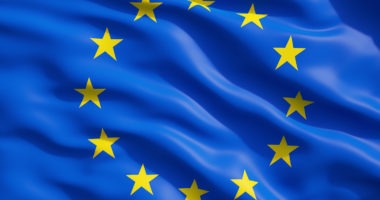Biopharmaceutical Innovation: Which Countries Rank the Best?
A recent industry study examines the extent to which the public investment, intellectual property, and drug pricing policies of 56 countries proactively contribute to or detract from global life-sciences innovation. So what did the report find?
The report finds that the United States places first overall, with policies (on a per-GDP basis) that contribute the most to global biopharmaceutical innovation, followed by Switzerland, Taiwan, Singapore, and Sweden. T Value Chain Insights (VCI) examines the rankings.
Examining the rankings
The study is based on three main indicators: governments' R&D expenditures on health (measured by the share of government R&D dedicated to health research and government R&D as a share of gross domestic product (GDP); the extent of their price controls on pharmaceutical drugs; and their protections for life-sciences intellectual property (IP), a measured by the period of biologics data exclusivity. The study was conducted by the Information Technology & Innovation Foundation (ITIF), a nonprofit public policy think tank based out of Washington, D.C. focused on public policies that spur technology innovation.
The United States ranked first overall. In terms of the specific indicators, it ranked seventh in the government R&D allocated to health research, first with respect to IP protection, and tied for first on the price-controls indicator. Switzerland, Taiwan, Singapore, and Sweden came in second through fifth, respectively, as a result of strong government investment in life-sciences research, low pharmaceutical price controls for Switzerland, Taiwan, and Singapore, and strong IP protection for Switzerland and Sweden. Overall, the US accounts for the largest funding for global life sciences innovation. Although the US produces about 22% of the global GDP and accounts for 4% of the world's population, it accounts for 44% of global biomedical R&D expenditures and its domestic pharmaceutical market about 40% of the global market.
Among the five leading pharmaceutical markets in the European Union (France, Germany, Italy, Spain, and the United Kingdom), Germany ranks the highest with an overall ranking of 15 among the 56 countries analyzed for the study. Italy ranks 18th, the United Kingdom ranks 24th, Spain 25th, and France 40th. In the case of the UK, Spain, and France, the indicator of high price controls brought down those countries' rankings. Germany and Italy, which ranked higher, have more moderate price controls, have biologics data exclusivity, and have moderate government contribution to life sciences research of 12.3% (Germany) and 16.6% (Italy), reflecting the percentage of government research dedicated to the life sciences/health. In contrast, in the highest ranking country of the US, the government contributes 23% of its research dollars to the life-sciences, a level that is on par or higher for the other top countries: Switzerland (21.2%), Taiwan (28.9%), Singapore (23.1%) and Sweden (26.5%).
Japan, another established market, ranked 28th overall. A breakdown of its key indicators show that it has moderate price controls, biologics data exclusivity (eight years), and its government allocates 10.8% of its total research dollars to life-sciences research.
Australia was the lowest ranking established market, earning a ranking of 52 out of 56 countries, making it one of the five countries ranking the lowest overall, which in addition to Australia, included the Philippines, Thailand, South Africa, and India. The low rankings are due to weak IP protection, particularly in India, the Philippines, and South Africa, which provide no biologics data exclusivity protection, according to the study. These countries also invest less in health R&D and impose price regulations, which contribute to reduce revenues and therefore, future biopharmaceutical investment. Among other emerging markets in terms of overall rankings, China (49th), Brazil (50th), and Russia (51st) , also ranked near the bottom, although India, ranked the lowest among all countries overall (56th out of 56th). Although China has a fair amount of government dollars allocated to life sciences research (17.5% of government research goes to health research), high price controls and more limited biologics data exclusivity (six years) brings its ranking down. Brazil and Russia each have moderate price control regulations, but limited government investment in health research, (9.4% of government research into the life sciences for Brazil and only 5.1% in Russia), and no biologics data exclusivity. India has high price controls, only 5.8% of government research allocated to the life sciences, and no biologics data exclusivity, which collectively contributed to the country’s bottom ranking.
The ITIF study uses the indicator of price indicator as it find that it correlates to biopharmaceutical innovation. The study further cited another study that examined the 28 largest pharmaceutical markets between 1980 and 2000 and found that countries with strict price controls temper domestic innovation in the life sciences. Another study analyzing data from 1986 through 2004 on European pharmaceutical price controls concluded that such policies resulted in 46 new medicines not being developed and estimated that if the US had had similar pricing policies during the same period, it would have resulted in 117 fewer new medicines.




